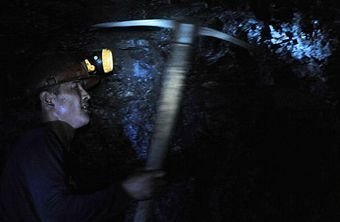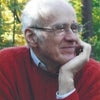
The cover of the current Atlantic promises to tell "why the future of clean energy is dirty coal," but the article is necessarily sparing with evidence that emissions from burning coal can be economically "sequestered" (or kept out of the atmosphere).
The author, James Fallows, argues that coal "will be with us" for a crucial while. Why? Because there's a lot of it (even if we pay attention to Richard Heinberg's careful assessment of reserves). Because the infrastructure for getting, transporting, and burning it already exists. Because it's cheap relative to other sources of power that can be expanded And because substantial indirect costs of coal are "externalized" (which is economist-speak for "not paid by the producer"). It should be added that the main subject of the article is not moving vehicles (oil) but generating electricity (coal, more than any other fuel).
An admirable journalist, Fallows in recent years has been breathing the coal soot and other pollution in China to report firsthand on life in the middle and burgeoning kingdom. Here he does the service of arguing that renewable sources of energy won't soon replace coal (which generates 43% of U.S. electricity; 70% of China's); and that it's in our interests to collaborate with the Chinese to develop ways to "sequester" the carbon dioxide released by burning coal. The article gives examples of collaboration that has grown since Bill Clinton's time in the White House.
Mentioning the concept of "underground coal gassification," Fallows gives the example of the Texas Clean Energy Project, but offers few details about new technology that has come out of collaboration with China, apart from the fact that they're building many coal-fired power stations and thus, to the extent they are trying to sequester greenhouse gas, could help us scramble up the learning curve.
Much of the public debate on energy in the U.S. boils down to unrealistic policies fighting with the marginally acceptable. On one side are those who refer to "demand" as if it's preordained and who assume we can safely and economically go on using as much energy as we do (though the mix may shift to bitumen from Alberta's sands, shale extracted by fraking, one of the varieties of nuclear power being hawked, natural gas, and the so far tiny category of renewable sources). On the other side are those who conclude that we have to conserve, "live more lightly," or as the transition movement says, plan for "energy descent." It is fair to add that many people are less than glowingly aware of the whole issue.
Unless techniques for sequestering carbon dioxide are both thorough and economical, the price of continuing to burn coal would be very high, at least if we credit scientific findings. These findings on climate change are widely denied by those with an economic stake in present energy sources, who take care to support elected officials ("campaign contributions") and who manipulate a news corps that often acts as if its job is not determining facts but simply quoting "both sides."
If sequestration can be made to work, and power plants are retrofitted, the climate won't suffer from the availability of cheap coal, but given the long planned lifetime of coal-fired power plants, here and throughout the world, time for proof is short: hope is not enough. Meanwhile, let's collaborate openly and energetically, with thanks to Fallows for highlighting this effort.
